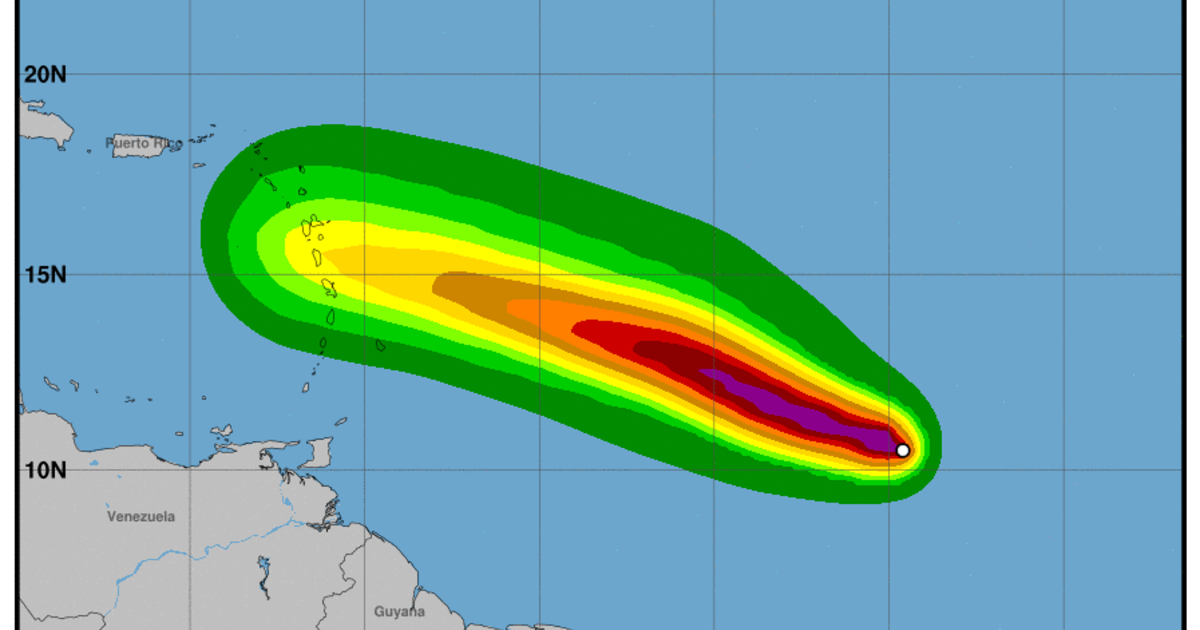Beryl’s Intensity and Potential Impacts: Beryl Projected Path

Beryl projected path – Hurricane Beryl, currently a Category 4 storm, is expected to intensify further as it approaches the Leeward Islands. Based on historical data and current observations, Beryl is anticipated to bring significant impacts to affected areas due to its intense winds, heavy rainfall, and potential storm surge.
Wind Damage
Beryl’s high wind speeds can cause extensive damage to buildings, infrastructure, and vegetation. Winds of this intensity can uproot trees, topple power lines, and cause structural damage to homes and businesses. Authorities are urging residents in affected areas to secure loose objects and take precautions to protect their property.
Flooding
Heavy rainfall associated with Beryl is likely to lead to widespread flooding. Inundated roads, bridges, and other infrastructure can disrupt transportation and emergency response efforts. Additionally, flooding can cause significant damage to homes and businesses, as well as pose risks to human life.
Storm Surge
Storm surge is a major threat posed by Beryl. As the storm approaches land, its strong winds can push a wall of water ahead of it, leading to coastal flooding. Storm surge can inundate low-lying areas, causing severe damage to property and infrastructure. Evacuation plans are in place for coastal communities that are at risk from storm surge.
Mitigation Measures
To mitigate the impact of Beryl’s intensity, authorities are implementing various measures. Evacuation plans have been activated, and residents in affected areas are being urged to evacuate to higher ground. Emergency shelters have been established to provide refuge for those who have evacuated their homes. Additionally, government agencies and relief organizations are preparing to provide assistance to affected communities.
Tracking and Monitoring Beryl’s Progress

Tracking and monitoring the progress of Hurricane Beryl is crucial for disaster preparedness and response. Various methods are employed to provide accurate and timely information about the storm’s path, intensity, and potential impacts.
Satellite Imagery
Satellite imagery plays a vital role in tracking Beryl’s progress. Satellites equipped with advanced sensors can capture images of the storm from space, allowing meteorologists to observe its structure, movement, and changes over time. These images provide valuable information about the storm’s size, shape, and cloud patterns, which help forecasters determine its intensity and potential impacts.
Weather Stations
Weather stations located along Beryl’s projected path collect real-time data on wind speed, wind direction, barometric pressure, and rainfall. This data is transmitted to weather centers, where it is used to track the storm’s movement and intensity. Weather stations provide valuable information about the storm’s impact on local areas, allowing emergency responders to make informed decisions about evacuations and other precautionary measures.
Aircraft Reconnaissance, Beryl projected path
Aircraft reconnaissance is another important method used to track and monitor Beryl’s progress. Specialized aircraft equipped with weather instruments fly directly into the storm, collecting data on wind speed, temperature, and pressure. This data provides detailed information about the storm’s structure and intensity, helping forecasters refine their predictions and issue more accurate warnings.
Importance of Accurate and Timely Tracking
Accurate and timely tracking of Hurricane Beryl is essential for effective disaster preparedness and response. It allows emergency managers to:
- Issue timely warnings to coastal communities and evacuate residents from threatened areas.
- Deploy emergency resources, such as search and rescue teams, to areas expected to be impacted.
- Coordinate response efforts among different agencies and organizations.
- Provide the public with up-to-date information about the storm’s progress and potential impacts.
Public Access to Tracking Data
The public can access real-time tracking data about Hurricane Beryl through various sources, including:
- National Hurricane Center website: https://www.nhc.noaa.gov/
- Weather Channel website: https://weather.com/
- Local news stations
- Social media platforms
By staying informed about Beryl’s progress, the public can make informed decisions about their safety and well-being during the storm.
Beryl’s projected path is still uncertain, but spaghetti models beryl can help us understand the range of possible outcomes. Spaghetti models beryl are a collection of computer simulations that show the potential paths of a storm. By looking at the spaghetti models, we can see the different ways that Beryl could develop and move.
This information can help us make better decisions about how to prepare for the storm.
Beryl projected path shows it moving away from the Caribbean. Barbados hurricane beryl caused some damage to the island, but thankfully it wasn’t as bad as it could have been. Beryl projected path now has it moving out to sea, away from any landmasses.